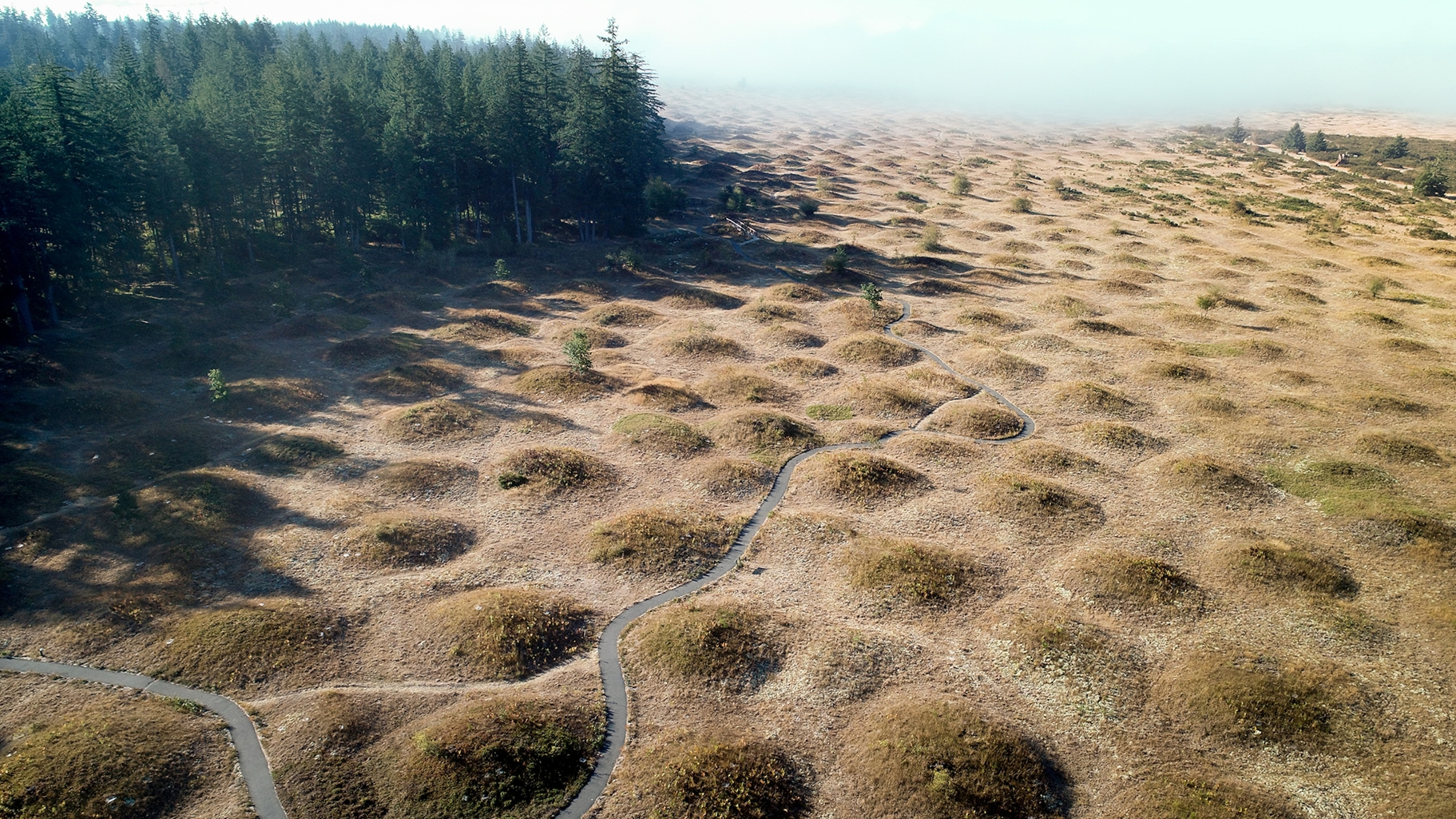Section 2 About (start here)
This book is dedicated to my thoughts about animals as unintentional architects, or animal architects. Through bioturbation, animals shape our soils and landscapes, but although I call them architects, their creations are not like ours. Yes, prairie gophers or night crawlers build homes to live and feed in, but the architecture I refer to is larger than any individual. It is the sum of generations of organisms. It is the ecological inheritance they create. It is order out of seemingly chaos. This idea is best illustrated through example, so take for example, Mima mounds.

Mima mounds are a somewhat common landscape feature in the Western United states, they are thought to be formed by pocket gophers. A study by Cox and Allen (1987) revealed that in these landscapes, even though it is less energetically favorable, gophers preferentially move soil uphill. The authors suggests that because these soils are often wet, mounding soil increases aeration, plant growth, and provides safer burrowing space (Cox and Allen, 1984). So yes, locally gophers are mounding soil. But the size of these mounds (sometimes several meters) are beyond what a single gopher can produce. It is thus across generations and across the landscape we see structure and order out of individual behavior.
This book is organized loosely by my dissertation chapters. Chapter 1 is about invasive earthworms and their impact on soil erosion in Minnesota’s forests. It is practical research, and does/will include many field methods, data analysis, and experimental design thoughts. Soil science, ecology, and hydrology are important topics. Chapter 2 is about bioturbation in the literature: how it’s perceived, how it’s modeled, how it’s connected to soil and landscape formation. Much thought is given to the qualitative tools we use to describe and categorize bioturbation and bioturbators. Chapter 3 is about modeling and using the lessons and data from prior chapters to create a quantitative framework for biological processes that drive soil, landscape, and hillslope formation.
2.1 Table of Contents
Animals as Agents of Heterogeneity and Homogeneity in Soil and Landscape Development
Chapter 1: MITPPC, Earthworms, and Soil Erosion
Manuscript: “soil erosion rates in jumping worm-infested vs. Lumbricus spp.-infested forested hillslopes based on short-lived isotopes and erosion pins.” - 2025
Manuscript: “soil erosion rates in jumping worm-infested vs. Lumbricus spp.-infested forested hillslopes based on field experiment.” - 2026
Manuscript: “Rainfall intensity and soil erosion in jumping worm-infested vs. Lumbricus spp.-infested forested hillslopes.” - 2026
Chapter 2: Literature Review of Animal Activity: Concepts, Methods, and Models
Introduction, bioturbation history
Conceptual models and methods
Numerical models
Chapter 3: Modeling Soil, Hillslope, Landscape Evolution
Bioturbation model, with particle size (1D)
Creep/mixing/production (2D lateral)
Hillslope evolution (2D vertical)